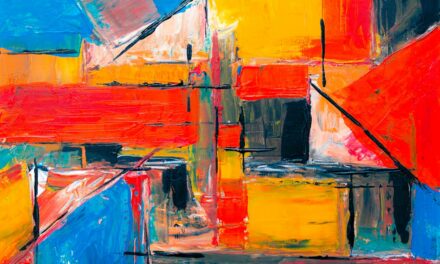The origins of the museum can be traced back to the early 19th century, a period marked by a burgeoning interest in the natural sciences and the arts. Established in 1823, the institution was founded by a group of local scholars and enthusiasts who recognised the need for a dedicated space to house and display collections that reflected the cultural and scientific advancements of the time. The museum’s establishment was not merely a response to the intellectual currents of the era; it was also a reflection of the broader societal changes occurring in Britain, including the Industrial Revolution, which spurred a fascination with both natural history and technological innovation.
Initially, the museum operated from a modest building, but as its collections grew, so did the need for a more expansive venue. By the late 19th century, the institution had moved to its current location, a purpose-built structure that was designed to accommodate an ever-increasing array of artefacts. This transition marked a significant milestone in the museum’s history, allowing it to expand its reach and influence within the community.
Over the decades, the museum has undergone numerous renovations and expansions, each aimed at enhancing its ability to serve as a repository of knowledge and a centre for public engagement.
Summary
- The museum was established in 1852 and has a rich history of collecting and preserving cultural artifacts.
- Collection highlights include rare archaeological finds, ancient artworks, and historical documents.
- The architectural features of the museum include a grand entrance hall, intricate ceiling designs, and ornate staircases.
- Visitor information: The museum is open daily from 10am to 5pm, with guided tours available upon request.
- Educational programs at the museum include school tours, workshops, and lectures on various historical topics.
- Special exhibitions are regularly held at the museum, showcasing temporary collections from around the world.
- Conservation efforts at the museum focus on preserving and restoring delicate artefacts and artworks.
- Future plans for the museum include expanding the exhibition space and digitising the collection for online access.
Collection Highlights
Ancient Egyptian Relics
Among its most notable artefacts is a remarkable assemblage of ancient Egyptian relics, which provides invaluable insights into one of history’s most fascinating civilisations. The collection includes mummies, intricate jewellery, and everyday items that illuminate the daily lives of ancient Egyptians.
A Treasury of Fine Art
In addition to its Egyptian collection, the museum is home to an extensive array of paintings and sculptures from the Renaissance to contemporary art. The gallery features works by renowned artists such as Turner, Constable, and Hockney, showcasing the evolution of artistic expression over centuries. Each piece is carefully curated to tell a story, inviting visitors to engage with the art on a deeper level.
Natural History Wonders
Furthermore, the museum’s natural history section includes an impressive collection of fossils and taxidermy specimens, offering a glimpse into the planet’s biodiversity and evolutionary history. This diverse range of collections not only highlights the museum’s commitment to preserving cultural heritage but also serves as an educational resource for future generations.
Architectural Features
The architectural design of the museum is as captivating as its collections. The building itself is a testament to Victorian grandeur, characterised by its intricate stonework and imposing façade. Designed by a prominent architect of the time, the structure features high ceilings, expansive galleries, and large windows that flood the interior with natural light.
This thoughtful design not only enhances the aesthetic appeal of the museum but also creates an inviting atmosphere for visitors. One of the most striking features of the museum is its grand entrance hall, which is adorned with ornate columns and decorative mouldings. This space serves as a focal point for visitors upon arrival, setting the tone for their experience within the museum.
Additionally, many galleries are designed with flexibility in mind, allowing for dynamic exhibitions that can adapt to changing themes and collections. The interplay between historical architectural elements and modern exhibition techniques creates a unique environment that encourages exploration and discovery.
Visitor Information
The museum welcomes visitors from all walks of life, offering a range of amenities to enhance their experience. Open year-round, it provides free admission to its permanent collections, making it accessible to everyone. This commitment to inclusivity reflects the institution’s belief in the importance of cultural engagement for all members of society.
For those seeking guided experiences, knowledgeable staff are available to lead tours that delve deeper into specific collections or themes. In addition to its exhibitions, the museum features a well-stocked café and gift shop, providing visitors with opportunities to relax and reflect on their experience. The café offers a selection of locally sourced food and beverages, while the gift shop features unique items inspired by the museum’s collections.
For families visiting with children, there are dedicated spaces designed for younger audiences, including interactive exhibits that encourage hands-on learning. This focus on visitor experience ensures that each individual leaves with lasting memories and a greater appreciation for the arts and sciences.
Educational Programs
Education lies at the heart of the museum’s mission. A wide array of educational programmes is offered throughout the year, catering to diverse audiences ranging from school groups to adult learners. These programmes are designed to foster curiosity and critical thinking while providing participants with opportunities to engage directly with experts in various fields.
Workshops often include hands-on activities that allow participants to explore themes related to specific exhibitions or collections. For schools, tailored educational resources are available that align with national curriculum standards. These resources include lesson plans, interactive sessions led by museum educators, and guided tours that enhance classroom learning.
The museum also collaborates with local schools to develop outreach initiatives that bring educational experiences directly into classrooms. By prioritising education, the museum not only enriches individual knowledge but also strengthens community ties through shared learning experiences.
Special Exhibitions
Temporary Collections and Rare Artefacts
These exhibitions often feature loans from other institutions or private collectors, providing visitors with access to rare artefacts that may not be part of the permanent collection.
Engaging Narratives and Multimedia Elements
The curatorial team works diligently to create engaging narratives around these exhibitions, often incorporating multimedia elements such as video installations or interactive displays.
Tackling Global Challenges
One recent special exhibition focused on climate change and its impact on biodiversity. Through a combination of striking visuals and informative panels, this exhibition aimed to raise awareness about environmental issues while encouraging visitors to consider their role in conservation efforts. Such thematic exhibitions not only draw attention to pressing global challenges but also position the museum as a vital platform for dialogue and reflection on contemporary issues.
Conservation Efforts
The preservation of artefacts is paramount to the museum’s mission, necessitating rigorous conservation efforts to ensure that collections remain intact for future generations. The museum employs a team of skilled conservators who specialise in various materials, including textiles, metals, and organic specimens. These professionals utilise advanced techniques and technologies to assess the condition of items and implement appropriate conservation strategies.
In addition to traditional conservation methods, the museum is committed to sustainability in its practices. This includes using environmentally friendly materials in restoration projects and implementing energy-efficient systems within exhibition spaces. The institution also engages in research initiatives aimed at developing new conservation techniques that can be shared with other museums globally.
By prioritising conservation efforts, the museum not only safeguards its own collections but also contributes to broader discussions about cultural heritage preservation.
Future Plans
Looking ahead, the museum has ambitious plans for expansion and innovation that aim to enhance its role as a cultural hub within the community. One key initiative involves developing new exhibition spaces that will allow for larger installations and more dynamic programming. This expansion will enable the museum to host major international exhibitions while continuing to showcase local artists and themes.
Furthermore, there is a strong emphasis on digital engagement in future plans. The museum aims to enhance its online presence through virtual tours and digital archives that make collections accessible to a global audience. This initiative reflects a growing recognition of the importance of digital platforms in reaching diverse audiences and fostering engagement beyond physical visits.
As it moves forward, the museum remains committed to its core values of education, accessibility, and cultural preservation while embracing new opportunities for growth and innovation in an ever-evolving landscape.
If you are interested in learning more about different art techniques, you may want to check out an introduction to the art technique Nerikomi artistic technique. This article explores the unique and intricate process of creating art using this specific technique. It provides insight into the history and methods behind Nerikomi art, offering a deeper understanding of the artistic process.
FAQs
What is the National Gallery of Art?
The National Gallery of Art is an art museum located on the National Mall in Washington, D.C., USA. It is one of the largest and most prestigious art museums in the country.
When was the National Gallery of Art established?
The National Gallery of Art was established in 1937 as a gift to the United States by financier and art collector Andrew W. Mellon.
What can visitors expect to see at the National Gallery of Art?
The National Gallery of Art houses a vast collection of European and American art, including paintings, sculptures, decorative arts, and works on paper. Visitors can expect to see masterpieces by artists such as Leonardo da Vinci, Rembrandt, Vermeer, Monet, and Van Gogh, among others.
Is there an admission fee to enter the National Gallery of Art?
No, admission to the National Gallery of Art is free. However, there may be a charge for special exhibitions.
What are the opening hours of the National Gallery of Art?
The National Gallery of Art is open Monday through Saturday from 10:00 am to 5:00 pm, and on Sundays from 11:00 am to 6:00 pm. It is closed on December 25 and January 1.
Are there guided tours available at the National Gallery of Art?
Yes, the National Gallery of Art offers guided tours of its collections and special exhibitions. These tours are led by knowledgeable docents and are free of charge.
Is the National Gallery of Art accessible to visitors with disabilities?
Yes, the National Gallery of Art is fully accessible to visitors with disabilities. The museum provides wheelchair access, as well as assistive listening devices and sign language interpretation for guided tours.
Can visitors take photographs inside the National Gallery of Art?
Photography for personal, non-commercial use is permitted in the permanent collection galleries of the National Gallery of Art. However, flash photography, tripods, and selfie sticks are not allowed. Restrictions may apply to special exhibitions.




